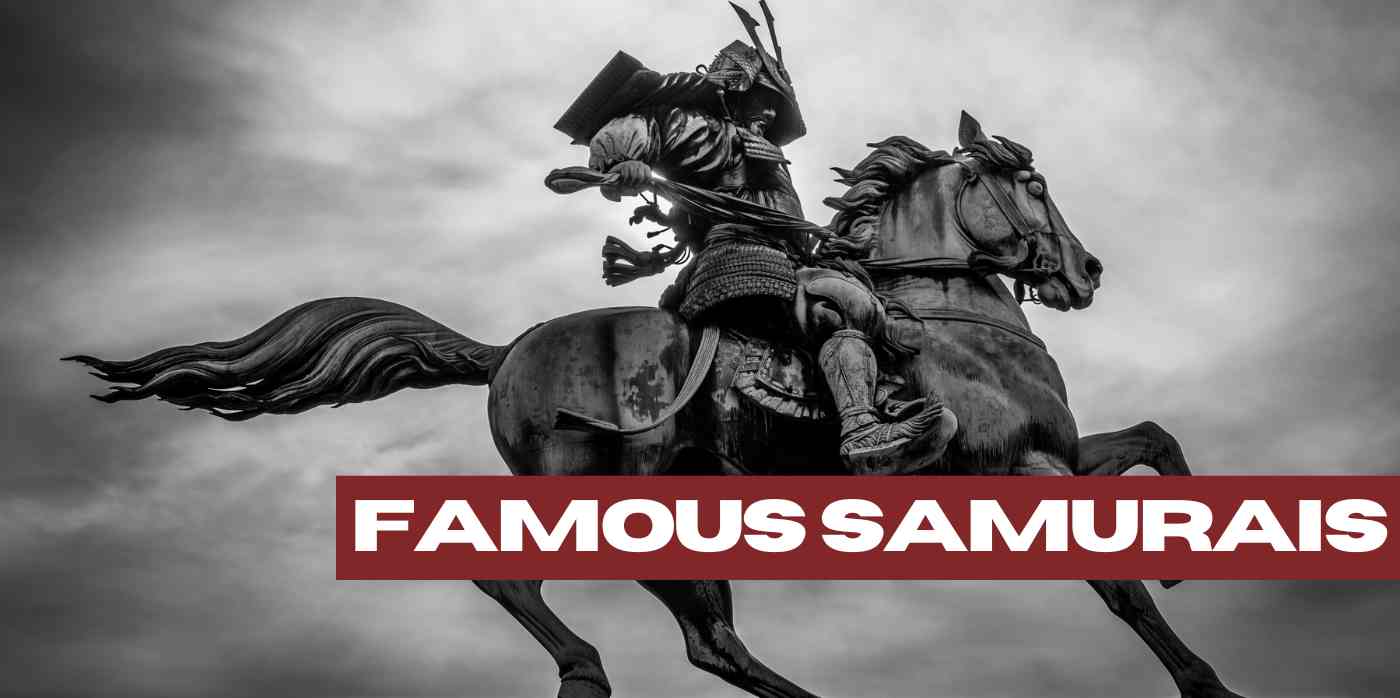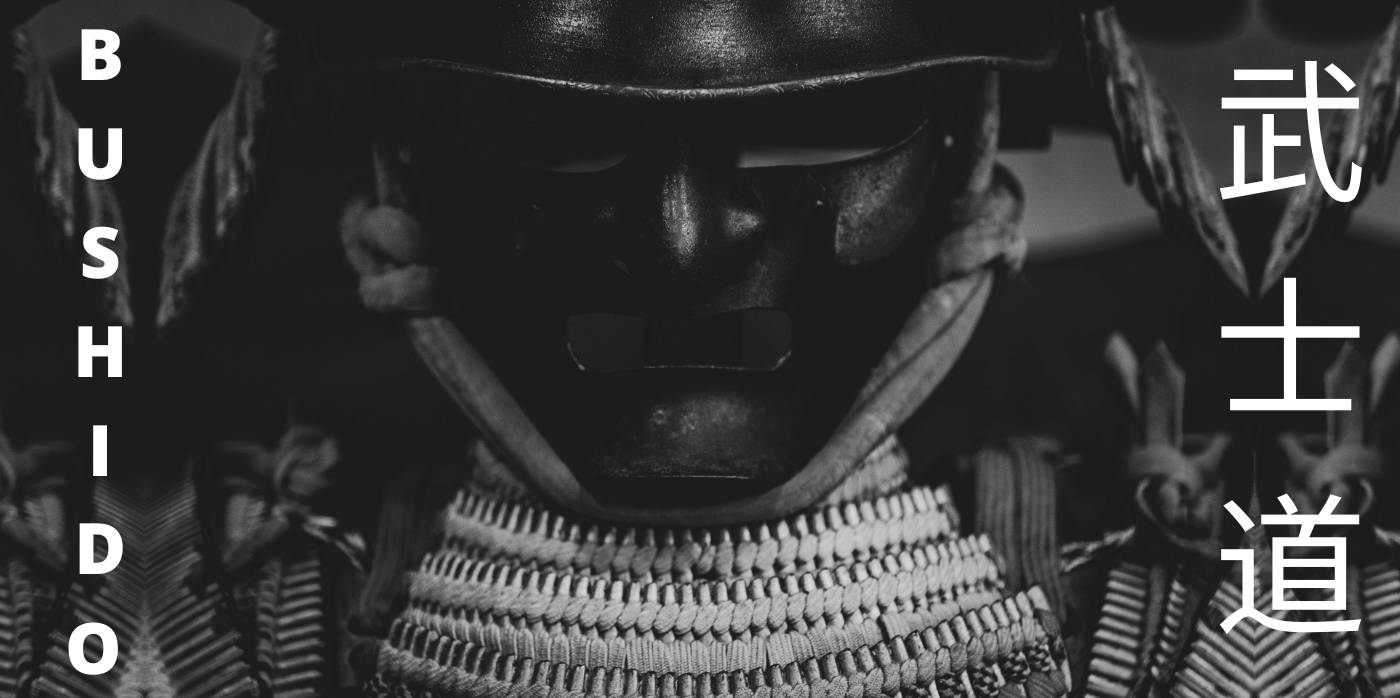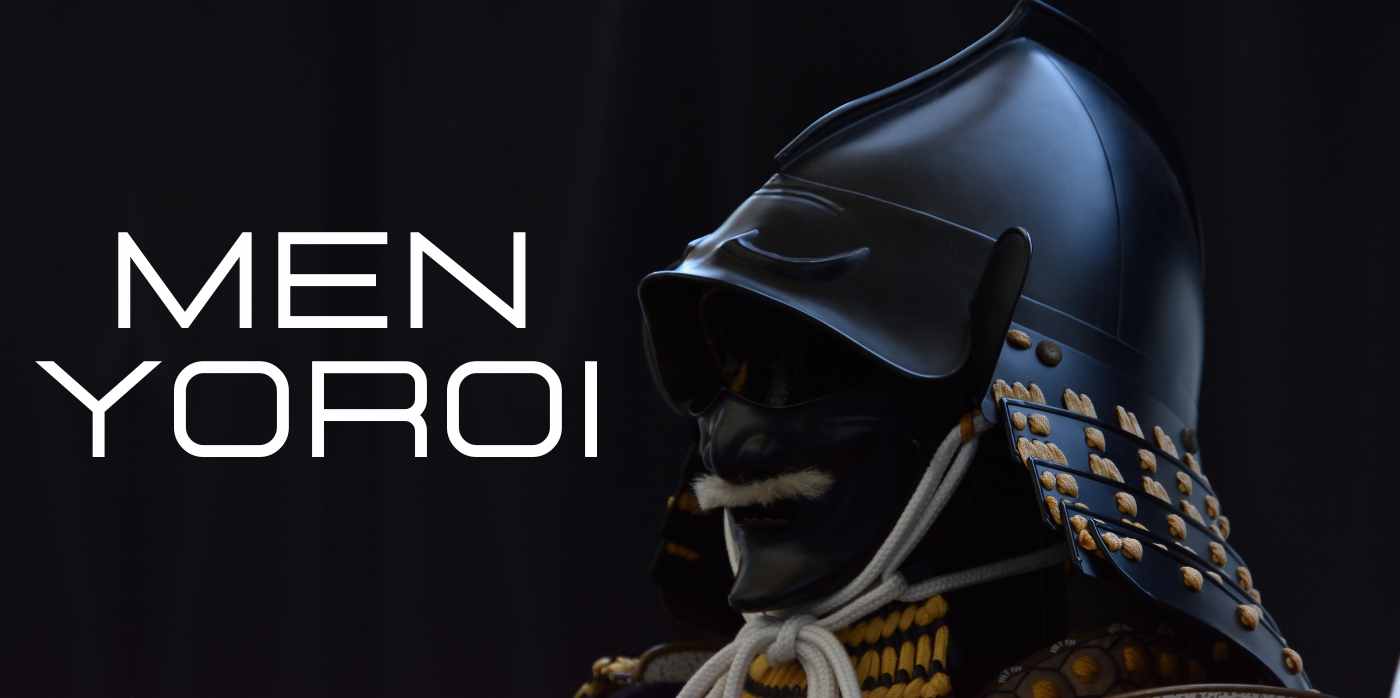Famous samurai were often known for their skills in swordsmanship and their loyalty to their masters. Many of them became famous for their bravery in battle, while others were known for their wisdom and knowledge.
Some of the most famous samurai include Miyamoto Musashi, who was a great swordsman and strategist; Oda Nobunaga, who was a powerful warlord; and Tokugawa Ieyasu, who founded the Tokugawa Shogunate.
These are just a few of the many famous samurai who have shaped Japanese history. Their stories are still told today, and their legacy continues to inspire people all over the world. In this blog post, we will list the most famous Samurais.
Most Famous Samurais

1. Kusunoki Masashige
Kusunoki Masashige was born in 1294 in Kawachi Province (present-day Osaka Prefecture). His father, Kusunoki Masanori, was a high-ranking samurai in the court of Emperor Go-Toba. In 1309, Masanori was accused of conspiring against the emperor and was forced to take his own life. Masashige and his brother, Chikauji, were also forced to commit suicide; however, they were pardoned at the last moment and allowed to live in exile.
In 1331, Emperor Go-Daigo launched a rebellion against the shogunate, which had been ruling Japan in his name. Kusunoki's father rejoined the emperor's cause, and Masashige followed suit. He quickly proved himself to be a skilled military commander, leading a force of just 500 men to victory against a much larger shogunate army at the Battle of Kamakura in 1332. However, the shogunate's forces soon overwhelmed Kusunoki's army, and he was forced to retreat.
Kusunoki continued to fight the shogunate's forces until his death in 1336. He was posthumously awarded the title of Sei-i Taishōgun by Emperor Go-Daigo, and is revered as a national hero in Japan. His widow remarried and had a son, Minamoto no Sadamoto, who also served Emperor Go-Daigo, Masashige's grandson, Minamoto no Mitsusuke (1346-1424), was posthumously awarded the title of Sei-i Taishōgun by Emperor Go-Tsuchimikado.
Kusunoki Masashige is considered a national hero of Japan for his loyalty to Emperor Go-Daigo, and is revered in the Shinto religion as one of the "Three Loyalty Gods" along with Minamoto no Yoshitsune and Oda Nobunaga. His story has been popularized in a number of works of fiction, including the historical novels Taiheiki (1406) and Heike Monogatari (ca. 1371-1416). Kusunoki's life has also been portrayed in several films and television series, including the 1957 film Kusunoki Masashige and the NHK taiga drama Kokushi Musō (2013).
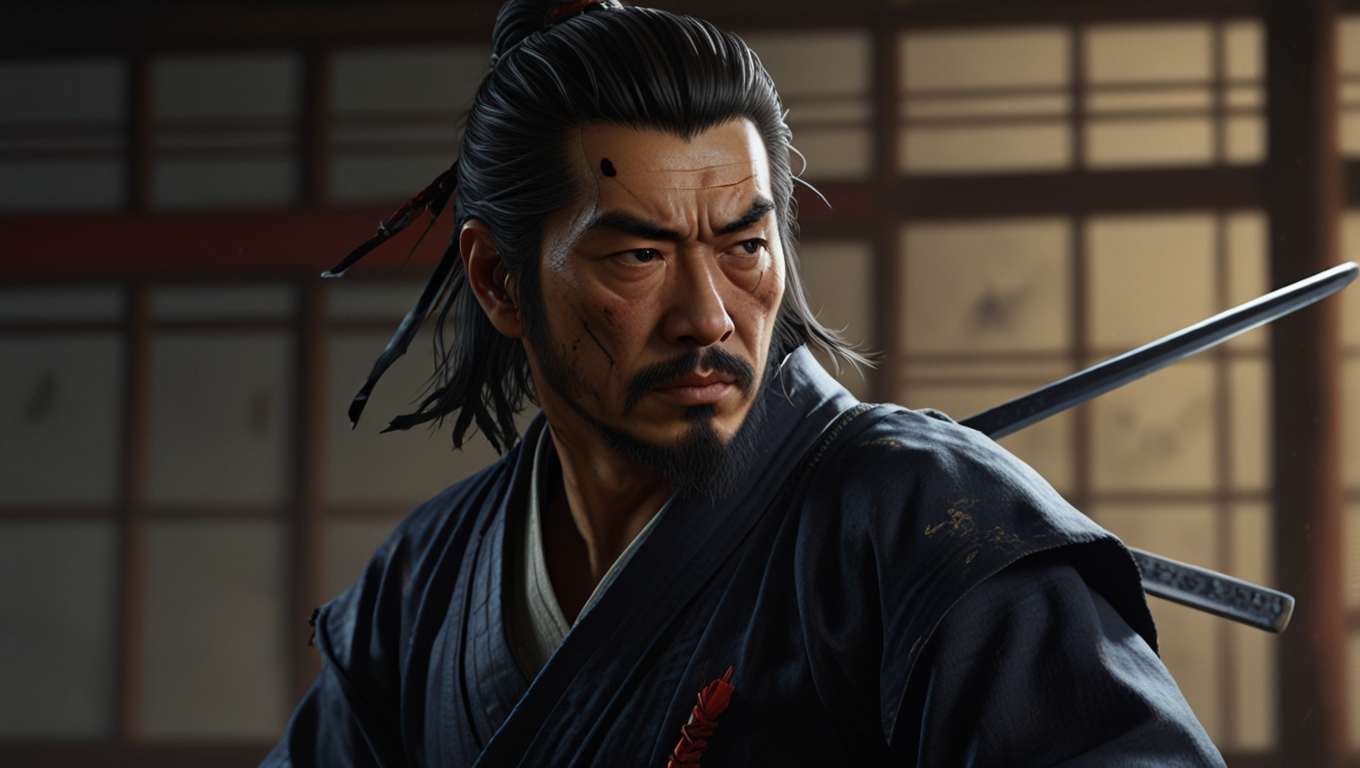
2. Miyamoto Musashi
Miyamoto Musashi was a Japanese swordsman, philosopher, and writer who lived during the Edo period. He is considered to be one of the most famous and skilled samurai of all time. Musashi fought in over 60 duels and is believed to have never been defeated. He is best known for his book, The Book of Five Rings, which is still studied by martial artists today.

3. Oda Nobunaga
Oda Nobunaga was a Japanese daimyo who lived during the Sengoku period. He was one of the most powerful warlords of his time and played a major role in the unification of Japan. Nobunaga was known for his ruthless tactics and his willingness to use any means necessary to achieve his goals. He was assassinated in 1582 by one of his own generals, Akechi Mitsuhide.
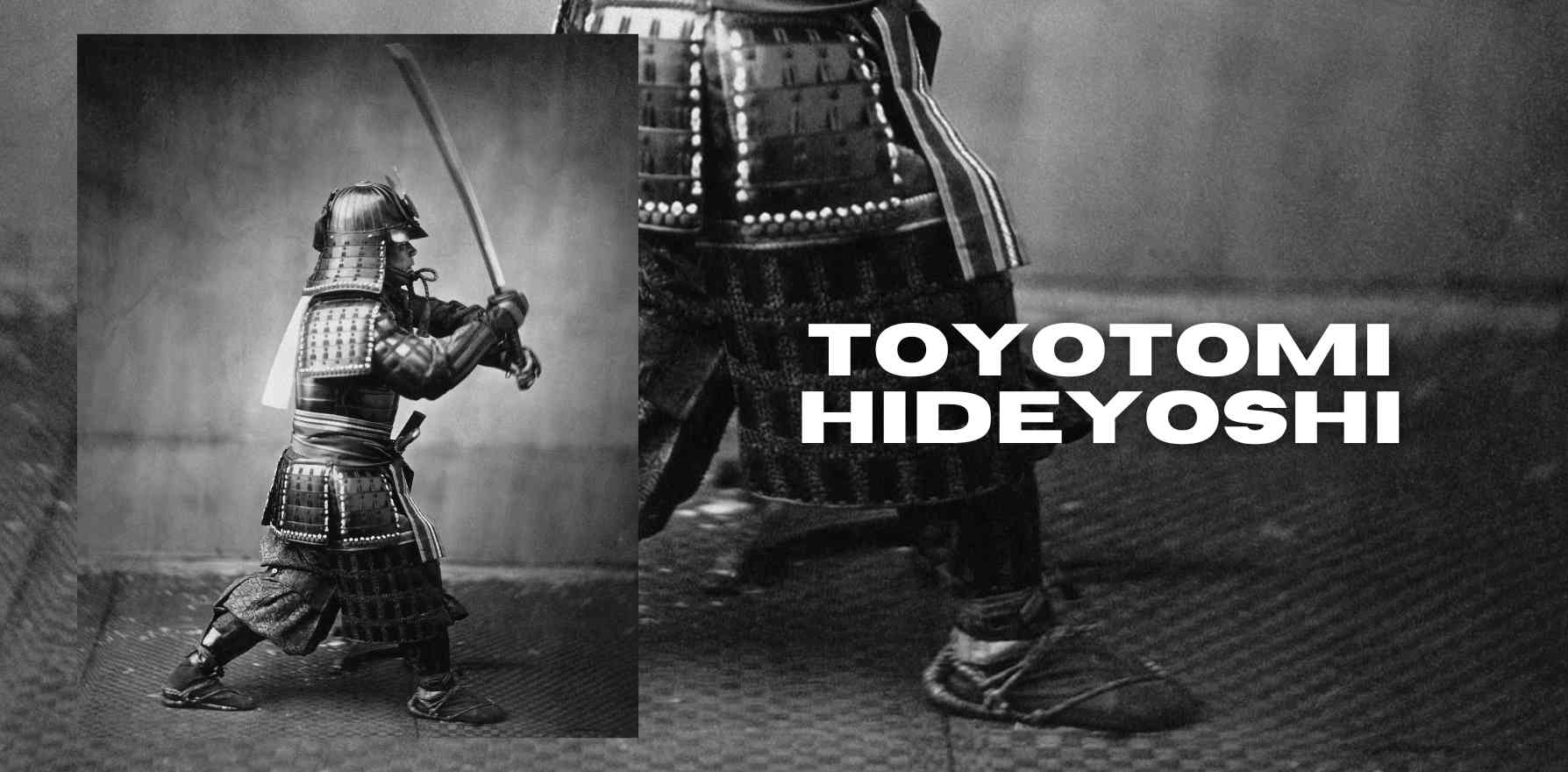
4. Toyotomi Hideyoshi
Toyotomi Hideyoshi was a Japanese politician, general, and nobleman who lived during the Sengoku period. He succeeded Oda Nobunaga and became one of the most powerful men in Japan. Hideyoshi is known for leading a successful campaign to unify Japan and for his patronage of the arts. He died in 1598 after suffering from ill health for several years.
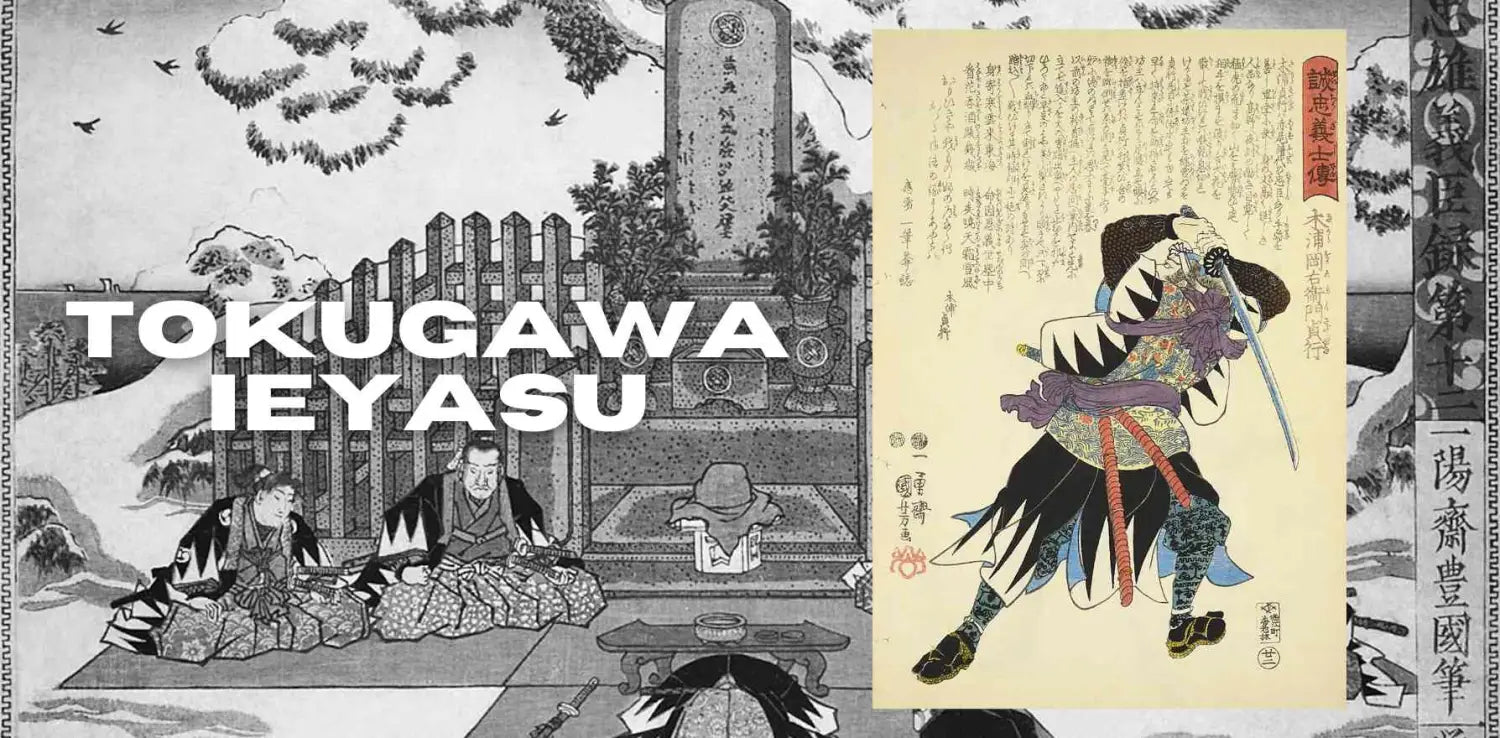
5. Tokugawa Ieyasu
Tokugawa Ieyasu was a Japanese daimyo who lived during the Sengoku period. He was one of the most powerful warlords of his time and played a major role in the unification of Japan. Ieyasu founded the Tokugawa shogunate, which ruled Japan for over 250 years until the Meiji Restoration in 1868. Ieyasu died in 1616 at the age of 75.
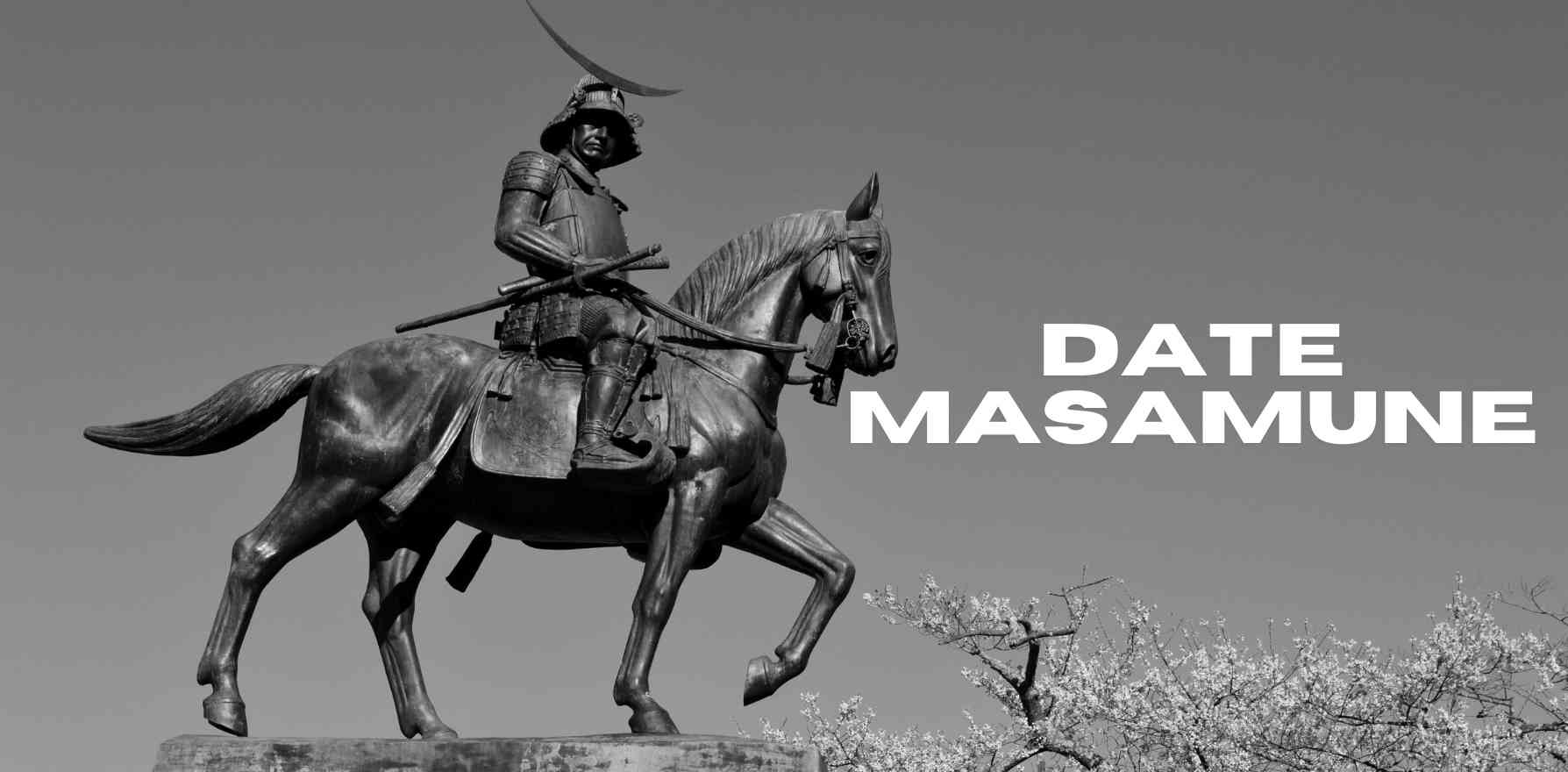
6. Date Masamune
Date Masamune was a Japanese daimyo who lived during the Azuchi-Momoyama period. He was known as "One-Eyed Dragon" because he lost an eye in battle at a young age. Masamune is considered to be one of the most famous samurai of all time due to his skill as a warrior and strategist. He died in 1636 at the age of 54.
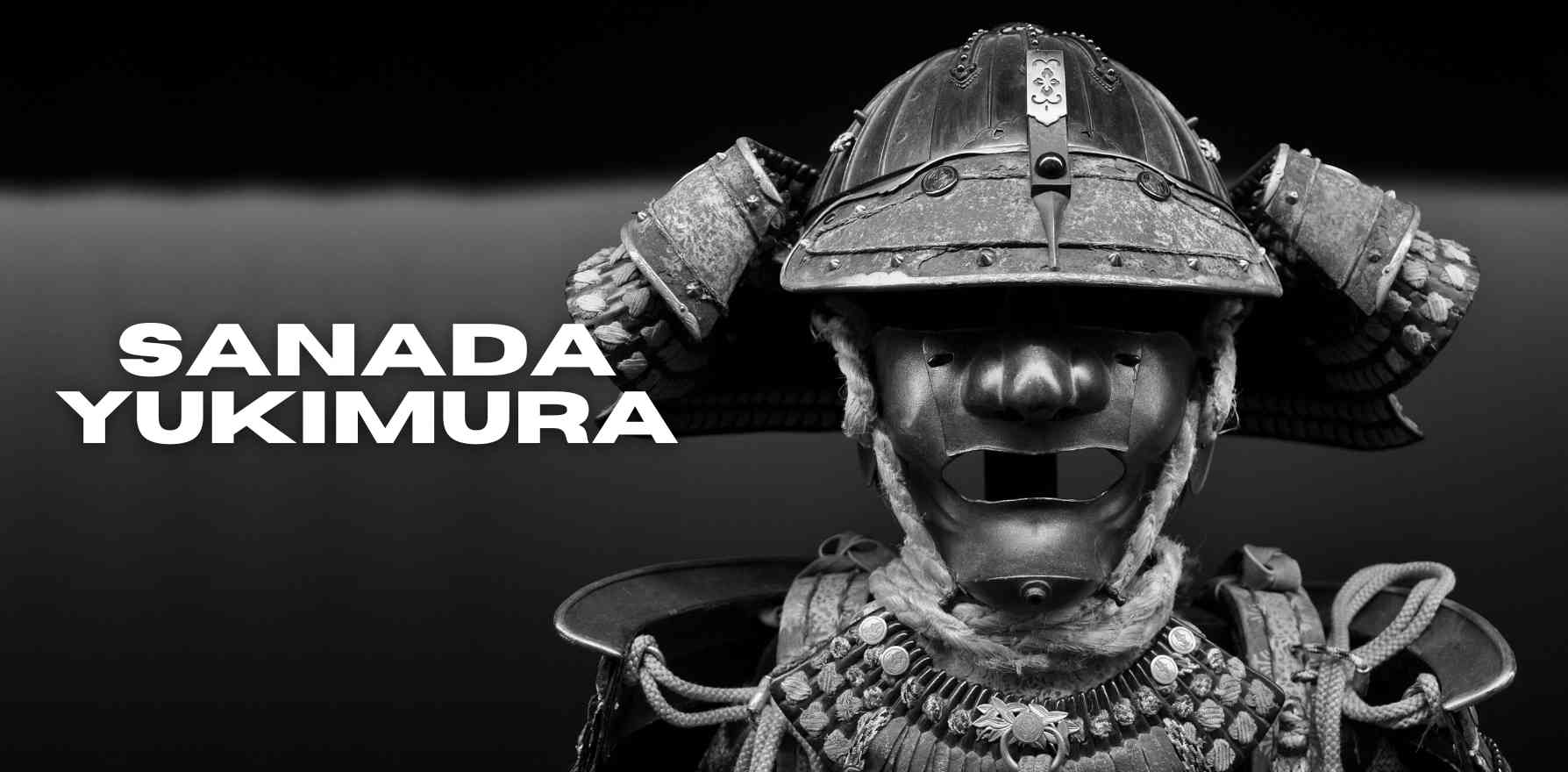
7. Sanada Yukimura
Sanada Yukimura was a Japanese samurai who lived during the Sengoku period. He was known for his skill on the battlefield as well as his loyalty to Tokugawa Ieyasu. Yukimura died in 1615 at the age of 39 after being wounded in battle.

8. Honda Tadakatsu
Honda Tadakatsu was a Japanese samurai warrior who lived during the Azuchi-Momoyama and early Edo periods. He served Tokugawa Ieyasu for many years and is considered to be one of the greatest samurai warriors of all time. Tadakatsu died in 1611 at the age of 62 after a long illness
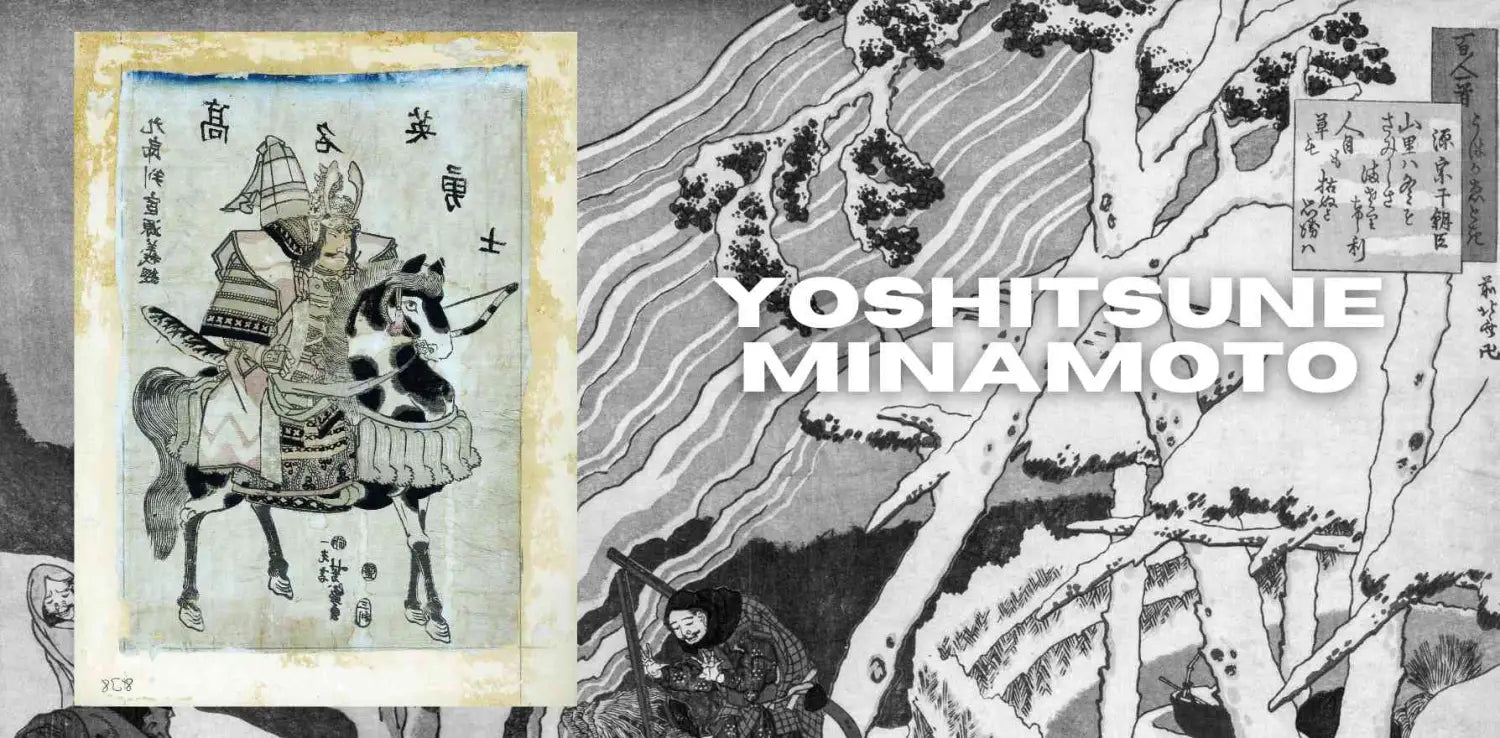
9. Yoshitsune Minamoto
Yoshitsune Minamoto was a Japanese military commander and Samurai who lived in the late 12th century. He is considered one of the most important figures in Japanese history, and his exploits are celebrated in many works of fiction.
Yoshitsune was born into the powerful Minamoto clan, one of the two main rival factions in feudal Japan. His father, Yoshitomo, was killed in a battle against the rival Taira clan. This left Yoshitsune and his brothers as orphans.
Yoshitsune's half-brother Yoritomo rose to become the leader of the Minamoto and waged a war against the Taira. Yoshitsune played a key role in many of his brother's victories, including the final battle at Dan-no-ura.
After the war, Yoritomo turned against Yoshitsune and had him hunted down. Yoshitsune fled but was eventually cornered and committed suicide rather than be captured.
Despite his tragic end, Yoshitsune's legend has endured. He is often portrayed as a heroic figure who fought against overwhelming odds. His story has been adapted into countless works of fiction, including plays, novels, films, and television dramas.
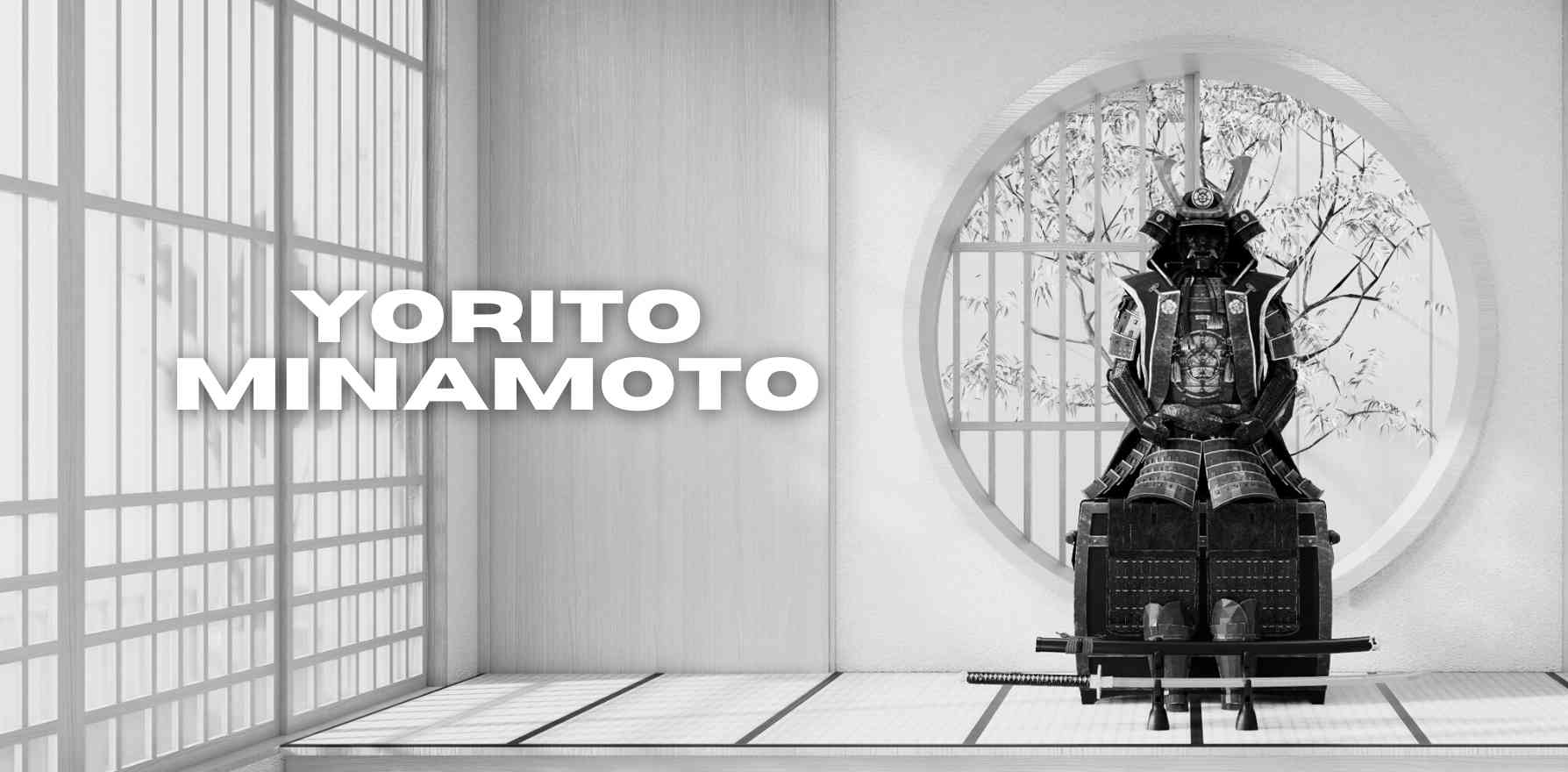
10. Yorito Minamoto
Yoritomo Minamoto was a powerful Japanese warrior and politician during the late Heian period and early Kamakura period. He is best known for leading the successful Genpei War against the Taira clan, which resulted in the establishment of the Kamakura shogunate. Yoritomo was also the founder of the Kamakura Shogunate, one of the most powerful military governments in medieval Japan.
Yoritomo's childhood is relatively shrouded in mystery. He was born into the powerful Minamoto clan, but his exact date of birth is unknown. His father, Minamoto no Yoshitomo, was a general who had served under Emperor Shirakawa. Yoritomo's mother, Hojo Masako, was the daughter of a powerful Fujiwara nobleman. She is said to have been a strong and beautiful woman, and Yoritomo is said to have inherited her good looks.
Yoritomo's early life was fraught with violence and turmoil. In 1160, his father led a failed rebellion against the emperor, and as a result, the family was forced into exile. Yoritomo's mother and brothers were killed, but he himself escaped to safety. He spent the next several years in hiding before finally emerging in 1180 to lead an army against the Taira clan. The Genpei War lasted for five years, and ended with a decisive victory for Yoritomo and his allies.
In 1185, Yoritomo was named shogun, or military dictator, by the emperor. He established his base of power in Kamakura, and from there he ruled Japan with an iron fist. He crushed any opposition to his rule, and ushered in a new era of military government. Under Yoritomo's rule, Japan enjoyed a period of peace and stability. He died in 1199, leaving behind a legacy as one of Japan's most influential and important historical figures.

11. Takeda Shingen
Takeda Shingen was a Japanese daimyo of the late Sengoku period who was born in Kōzuke Province. He is most well-known for his conflict with Uesugi Kenshin, as well as his famous "going to the war", or military strategies. Many of these can be found in The Art of War, a book written by Sun Tzu.
Shingen's ascension to power began when he inherited his father's position as head of the Takeda clan. From there, he quickly began to expand his territory and influence. At one point, he even controlled most of Kai Province. His main rivals during this time were the Imagawa and Hojo clans.
Shingen's most famous conflict was with Uesugi Kenshin, who was one of the most powerful daimyos of his time. The two men fought several times, with neither side ever gaining a clear victory. The conflict came to an end when Kenshin died of old age.
After Kenshin's death, Shingen continued to expand his territory. He eventually came into conflict with the Tokugawa clan, which was then the most powerful clan in Japan. The two sides fought several times, but neither side was able to gain a clear victory. In the end, the conflict ended when both sides agreed to sign a peace treaty.
Shingen is considered one of the most famous and successful military commanders in Japanese history. His strategies and tactics are studied by military leaders to this day. He is also remembered for his famous saying, "If you know your enemies and know yourself, you will not be defeated in a hundred battles."
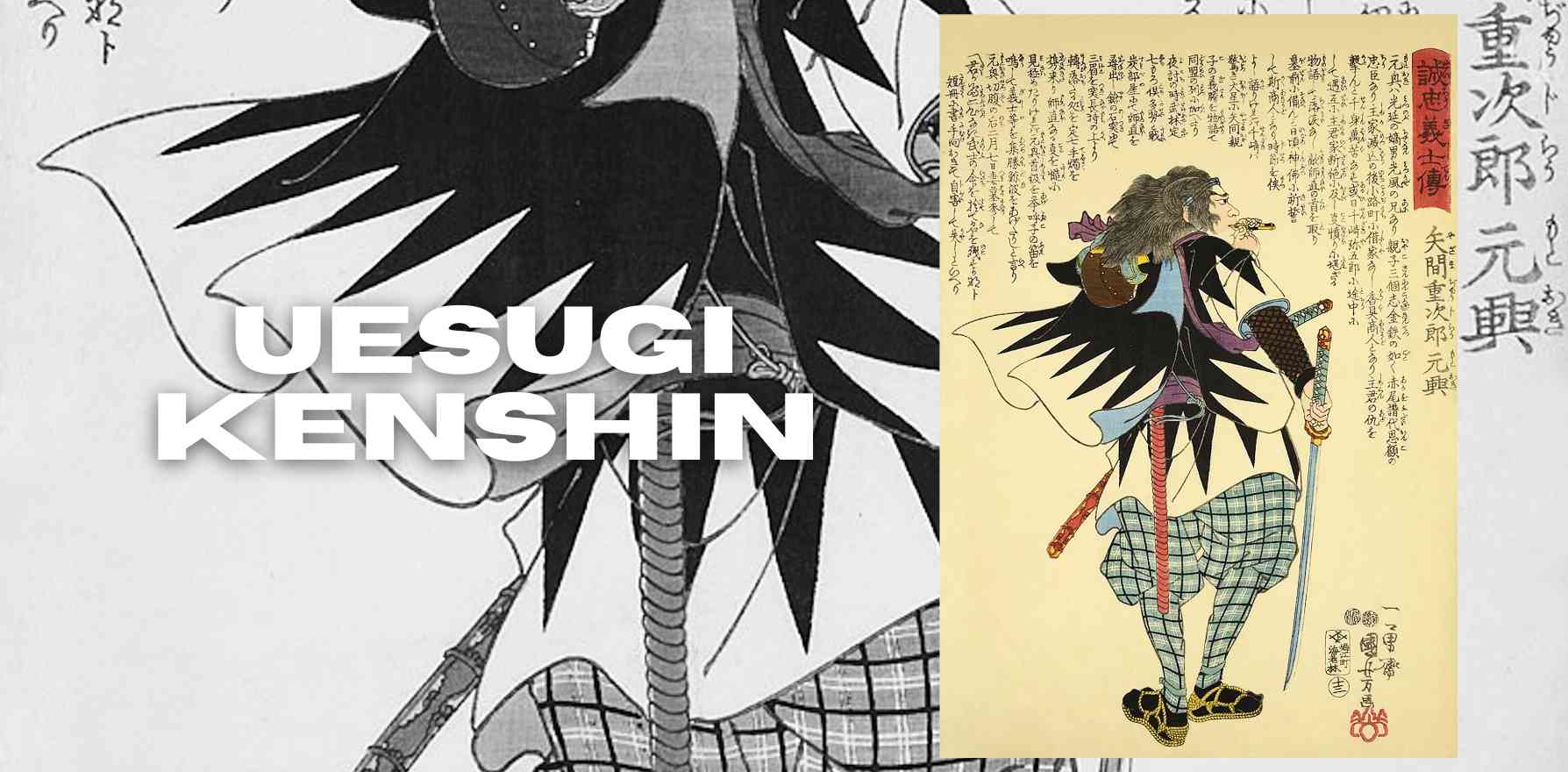
12. Uesugi Kenshin
Uesugi Kenshin (February 18, 1530 – April 19, 1578) was one of the most famous warlords of feudal Japan. He was born "Kagekatsu", and later given the childhood name "Torachiyo". He founded the Uesugi clan's Nanbu branch. A brilliant tactician, he made many strategic alliances with other powerful daimyōs. Although at times a ruthless leader, he was also known for his compassion in rescuing captured soldiers and nobility. He has been described as Japan's "Napoleon". Kenshin is revered as one of the most popular warlords in Japan.
Kenshin was born on February 18, 1530, in the village of Nakamura in the province of Echigo, present-day Niigata prefecture. He was the first son of Uesugi Kageharu (1493–1553), and grandson of Nagao Tamekage (1454–1519), who was in turn the great-grandson of Nagao Kagetora (1394–1473). Kenshin's mother was a daughter of Ogigayatsu Uesugi Tomoakira (1477–1513).
In 1535, Kenshin's father Kageharu was killed by his uncle Uesugi Sadazane (1467–1541) in a coup d'état. Kenshin was only five years old at the time, and as the firstborn son, he became head of the family. This meant that he inherited his father's position as chieftain of the Nagao clan. However, because he was still a child, Sadazane took power himself, ruling the clan in Kenshin's name.
In 1542, at the age of 12, Kenshin was married to a daughter of Suwa Yorishige (1488–1557), chieftain of the Suwa clan and lord of Shimosuwa in Shinano Province. The following year, Kenshin's uncle Sadazane was killed in battle by his cousin Uesugi Kenshin (1473–1561). With Sadazane gone, Kenshin finally became head of the Nagao clan at the age of 13.
Kenshin wasted no time in asserting his authority over the clan. In 1551, he led his troops in a successful attack on Murakami Yoshikiyo (1511–1573), another powerful warlord in the Tōhoku region. This brought an end to Murakami's reign of terror, and earned Kenshin the respect of his people.
In 1558, Kenshin once again showed his skill as a military strategist by allying himself with Oda Nobunaga (1534–1582), one of the most powerful daimyōs in Japan. Together, they attacked Uesugi Kenshin (1493–1553), Kenshin's uncle and the current head of the Uesugi clan. Although Kenshin's uncle put up a good fight, he was eventually defeated and killed. This victory cemented Kenshin's position as one of the most powerful warlords in Japan.
Kenshin's next goal was to unify the country under his rule. In 1561, he led his troops to victory against the Imagawa clan, one of his main rivals for power. This victory brought him one step closer to his goal.
However, Kenshin's dream of unifying Japan was cut short by his untimely death in 1578. He died of an illness at the age of 48. His nephew Uesugi Kagekatsu (1556–1623) succeeded him as head of the Uesugi clan.
Kenshin was a brilliant military strategist, and was known for his compassion towards his enemies. He was also an excellent horseman, and was said to be able to shoot an arrow with such accuracy that he could hit a target from 100 paces away.
Kenshin has been described as Japan's "Napoleon". He is one of the most popular warlords in Japanese history, and is still revered by many Japanese today.
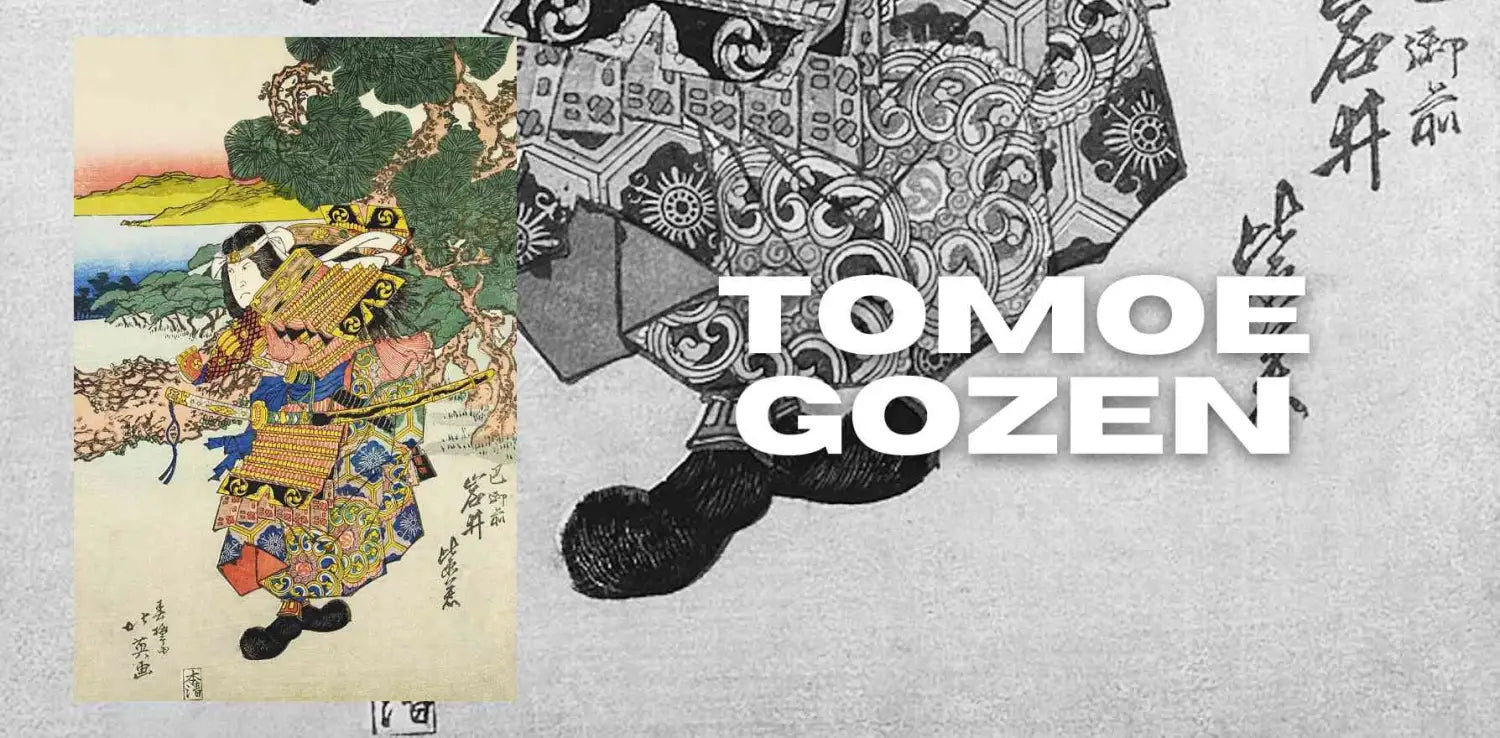
13. Tomoe Gozen
Tomoe Gozen was a female samurai who lived in Japan during the 12th century. She is considered to be one of the most skilled and feared warriors of her time.
Tomoe was born into a noble family in Yamashiro Province. She was married to Minamoto Yoshinaka, a general who served the emperor.
Tomoe was known for her courage and skill in battle. She fought alongside her husband in many battles and is said to have killed several enemies.
In 1184, Yoshinaka was betrayed and killed by his own cousins. Tomoe was captured by the enemy and forced to commit seppuku (ritual suicide).
Tomoe Gozen is remembered as one of the most legendary samurai warriors in Japanese history.
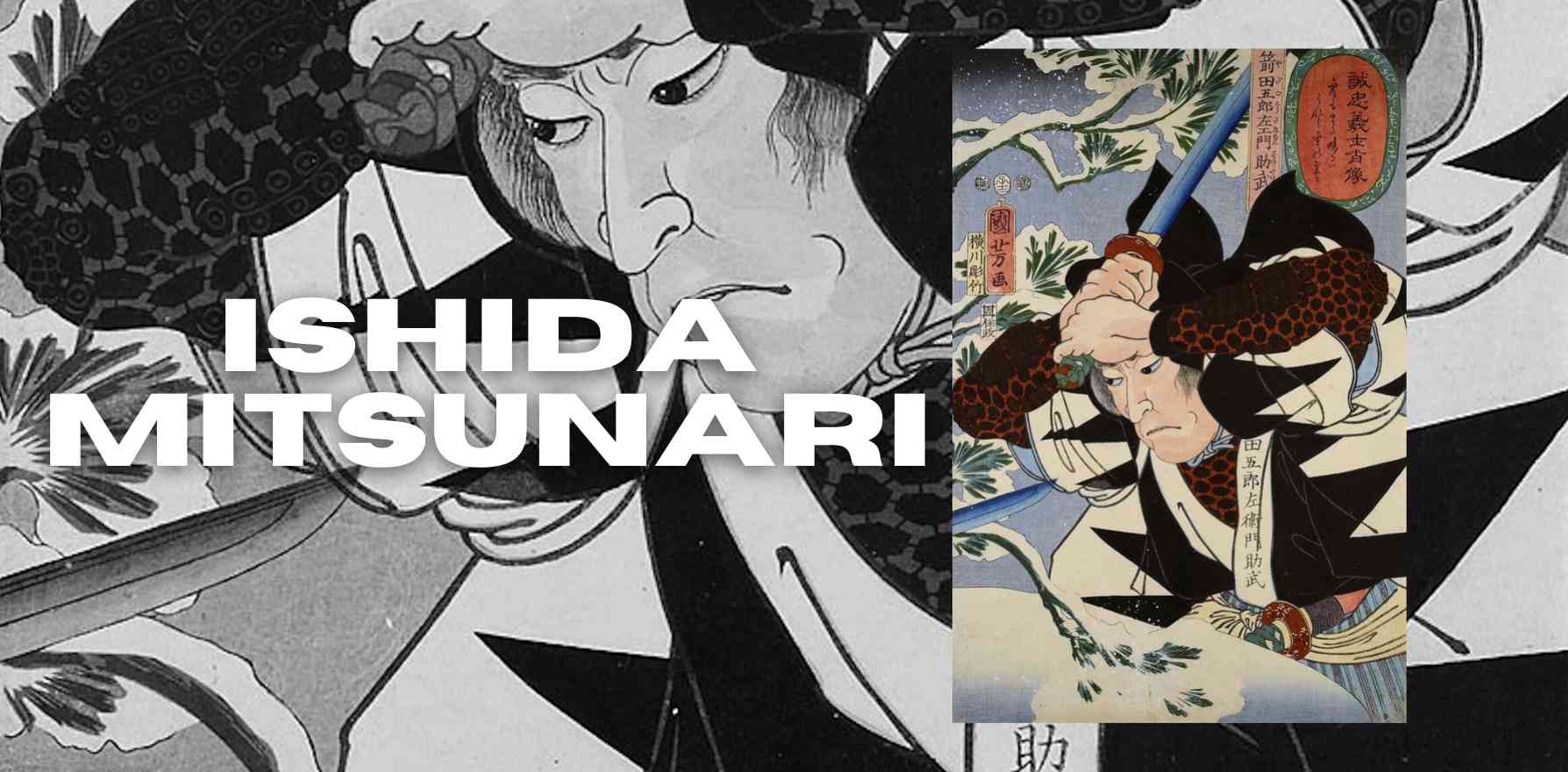
14. Ishida Mitsunari
Ishida Mitsunari was a Japanese daimyo of the late Sengoku period. He is best known as the lead commander in the Western Army during the Battle of Sekigahara, which ended the war between Toyotomi Hideyori and Tokugawa Ieyasu. Mitsunari was defeated and killed in that battle.
Ishida Mitsunari was born in Okushima Domain, Awa Province, today's Chiba Prefecture. His father, Ishida Masazumi, served Tokugawa Ieyasu as a magistrate in charge of religious affairs, and his mother was a daughter of Oda Nobuyuki. Mitsunari's earliest memory was of being carried by his father to see Toyotomi Hideyori, the son of Toyotomi Hideyoshi, when he came to visit Okazaki Castle.
In 1585, when Mitsunari was five years old, his father was transferred to Kii Province. In 1590, his father died of illness, and Mitsunari was raised by his mother and grandmother. Oda Nobukatsu, the younger brother of Oda Nobunaga and Oda Nobuyuki, took an interest in Mitsunari and arranged for him to be adopted into the Ishida family.
In 1598, when Mitsunari was 17 years old, he entered the service of Tokugawa Ieyasu as a page. He participated in the Siege of Odawara and the Battle of Sekigahara, and was awarded a fief in Kii Province.
Mitsunari served Tokugawa Ieyasu loyally for many years, but after Ieyasu's death in 1616, he became disillusioned with Tokugawa Hidetada, Ieyasu's son and successor. In 1618, Mitsunari quarreled with another daimyo, Honda Masanobu, over the succession to Toyotomi Hideyori. The quarrel escalated into open conflict, and in 1621 Mitsunari led an army against Honda in the Battle of Miyajima.
The battle was inconclusive, but both sides suffered heavy losses. In the aftermath, Tokugawa Iemitsu, the grandson of Tokugawa Ieyasu and the third shogun of the Tokugawa dynasty, intervened and ordered both Mitsunari and Honda to submit to his authority.
Mitsunari was pardoned and allowed to return to his fief in Kii Province. However, he continued to harbor resentment against the Tokugawa regime. In 1630, when Toyotomi Hideyori staged a rebellion against the Tokugawa Shogunate, Mitsunari sided with him. He led an army against the Tokugawa forces in the Battle of Sekigahara, but was defeated and killed in that battle.
Mitsunari was posthumously condemned as a traitor, and his head was displayed in Edo (today's Tokyo). However, in later years he came to be revered as a patriotic hero, and many novels, plays, and movies have been made about his life.
Today, the city of Mitsunari in Chiba Prefecture is named after him. A monument to Ishida Mitsunari stands in front of the Chiba Prefectural Government Building, and his grave is located at the temple of Zuigan-ji in Matsushima, Miyagi Prefecture.

15. Kato Kiyomasa
Kato Kiyomasa was a Japanese general who lived from 1562-1611. He is most famous for leading the Osaka Campaign, which was a series of battles that took place in 1614-15. This campaign resulted in the capture of the city of Osaka and the death of Toyotomi Hideyori, the son of Toyotomi Hideyoshi. Kiyomasa also participated in the Korean campaigns of 1592-98 and again in 1609, when he helped to conquer the city of Pyongyang. He is remembered as a fierce warrior and an able leader, and his exploits have been celebrated in many works of literature and film.

16. Sakamo Ryoma
Sakamoto Ryoma (1835 – 1867) was a prominent figure in the movement to overthrow the Tokugawa shogunate during the Bakumatsu period in Japan. He is considered one of the most influential figures in Japanese history and helped usher in the Meiji Restoration, which led to dramatic political and social changes in Japan.
Ryoma was born in Tosa Province (present-day Kochi Prefecture) to a wealthy farming family. His father died when he was young and his mother remarried, but Ryoma was largely raised by his grandfather. From a young age, he showed an interest in swordsmanship and often practiced with his friends. He also began to develop a strong dislike for the Tokugawa shogunate, which he felt was corrupt and repressive.
In 1853, Ryoma travelled to Edo (present-day Tokyo) in order to take part in the shogunate's sword-fighting competition. He did not win, but his skill impressed many of the spectators. It was around this time that he first met Katsura Kogoro, another young man who would play a key role in the Bakumatsu period.
The following year, Ryoma returned to Edo and joined the Shinsengumi, a group of samurai warriors loyal to the shogunate. He quickly rose through the ranks and became one of their most skilled members. However, Ryoma's views on the shogunate began to change and he started to sympathize with the anti-shogunate movement. In 1858, he left the Shinsengumi and returned to Tosa.
Over the next few years, Ryoma played a leading role in the movement to overthrow the Tokugawa shogunate. He helped form several secret societies dedicated to this goal, and also worked to build alliances with foreign powers such as Britain and France. In 1866, he was instrumental in persuading the Emperor Meiji to call for an end to the shogunate's rule. The following year, Ryoma was assassinated by pro-shogunate forces. His death was a major blow to the anti-shogunate movement, but ultimately it could not stop the Meiji Restoration from occurring.
Today, Ryoma is revered as one of the most important figures in Japanese history. His face can be seen on everything from postage stamps to statues, and his story continues to inspire people both inside and outside of Japan.
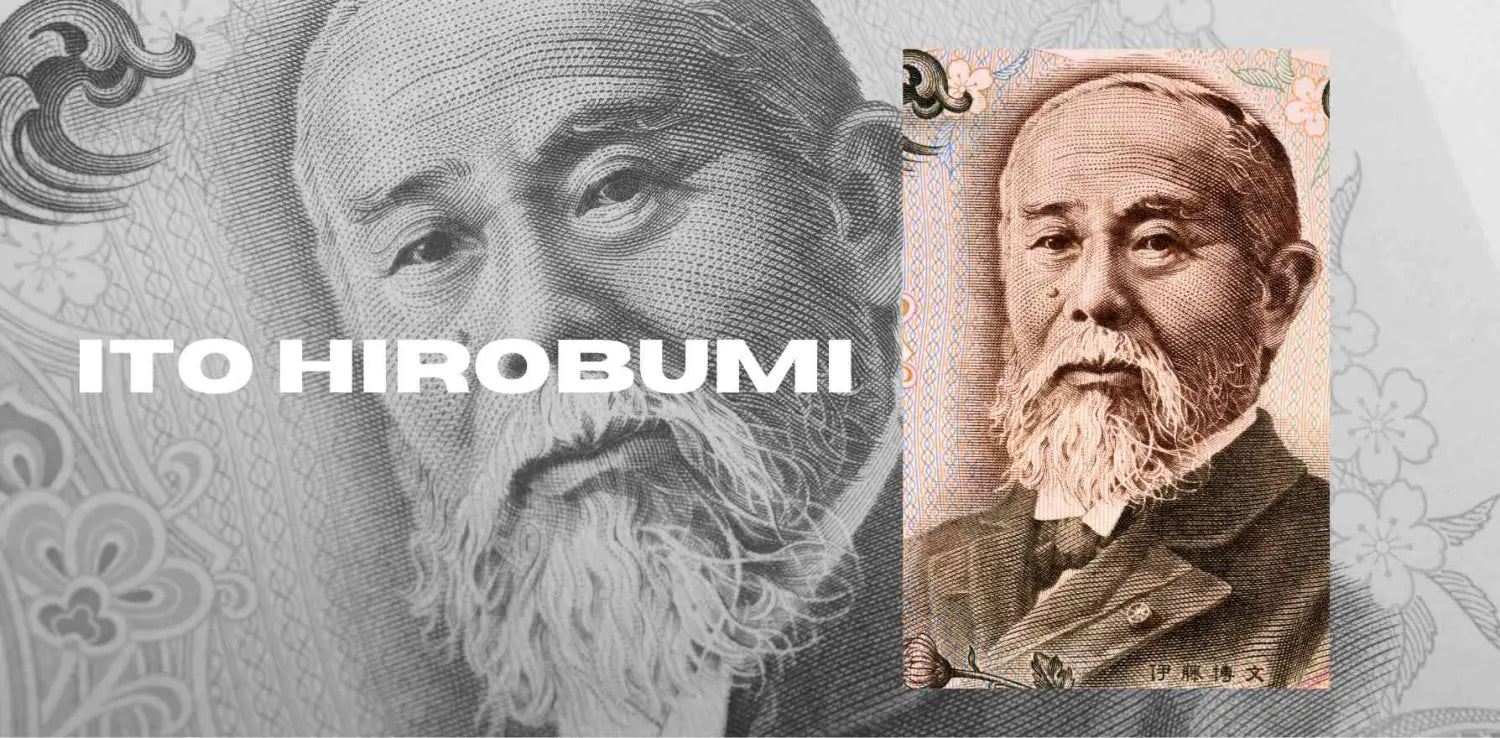
17. Ito Hirobumi
Ito Hirobumi (伊藤 博文, October 30, 1841 – October 26, 1909) was a leading figure in the early Meiji period of Japan. He played an important role in the creation of the Meiji Constitution in 1889 and also served as the first Prime Minister of Japan from 1885 to 1888 and again from 1892 to 1896. He was assassinated by a Korean nationalist in 1909.
Ito was born in Hagi, Yamaguchi Prefecture as the son of a low-ranking samurai official. He studied at Kaisei Academy and then entered into service with the Mori clan of Choshu. With the support of his lord Mori Yoshikiyo, he studied rangaku (Western learning) and gunnery in Nagasaki. When he returned to Choshu, he joined the sonnō jōi ("expel the barbarians") movement aimed at expelling foreigners and restoring power to the emperor.
In 1865, Ito was sent by the Mori clan to Edo to study under Nakamura Masanao. He also studied Western philosophy and science with Nakajima Tadayasu. In 1867, Ito accompanied Tokugawa Yoshinobu, the last shogun of the Tokugawa Shogunate, on his trip to meet Emperor Meiji in Kyoto. The meeting provided Ito with an opportunity to observe firsthand the young emperor's character and bearing.
In 1868, the Meiji Restoration began with the fall of the Tokugawa Shogunate. Ito returned to his native Choshu, and was active in the establishment of the new imperial government. He served as a member of the first House of Representatives from 1869 to 1872. In 1871, he was sent to Europe as a member of the Iwakura Mission, a diplomatic voyage aimed at observing Western societies and learning about their technologies.
Upon his return to Japan, Ito played an important role in drafting the new constitution for Japan. He also served in several key government posts, including Minister of Foreign Affairs (1882–1885), Home Minister (1883–1885), and Finance Minister (1885–1888). In 1885, he became the first Prime Minister of Japan under the new constitution. He held this position until 1888, when he resigned due to opposition from within his own party.
Ito again served as Prime Minister from 1892 to 1896. During his second term, he oversaw the enactment of a number of important laws, including the Law for the National Flag and Anthem (1896), and the Law for the Protection of Intellectual Property (1896). He also worked to improve relations with China and Russia. In 1896, he negotiated the Treaty of Shimonoseki with China, which resulted in the cession of Taiwan to Japan.
In October 1909, Ito was assassinated by Korean nationalist An Jung-geun in Harbin, China. An was arrested and later executed by the Japanese government. Ito's death was a blow to the Meiji government, which was already facing a number of challenges, including economic difficulties and increased opposition from within Japan.
Ito's assassination also had important implications for Japan's relations with Korea. Prior to his death, Ito had been working on a plan for the annexation of Korea. In 1910, Japan formally annexed Korea, an action that was widely condemned by the international community. Ito's assassination played a role in sparking the escalation of tensions between Japan and Korea that would eventually lead to the outbreak of the Russo-Japanese War (1904-1905).
Ito's legacy is mixed. He is credited with helping to modernize Japan and usher in the Meiji era. However, he is also criticized for his role in the annexation of Korea and the Russo-Japanese War. Ito remains an important figure in Japanese history, and his life and work continue to be studied by scholars both inside and outside of Japan.
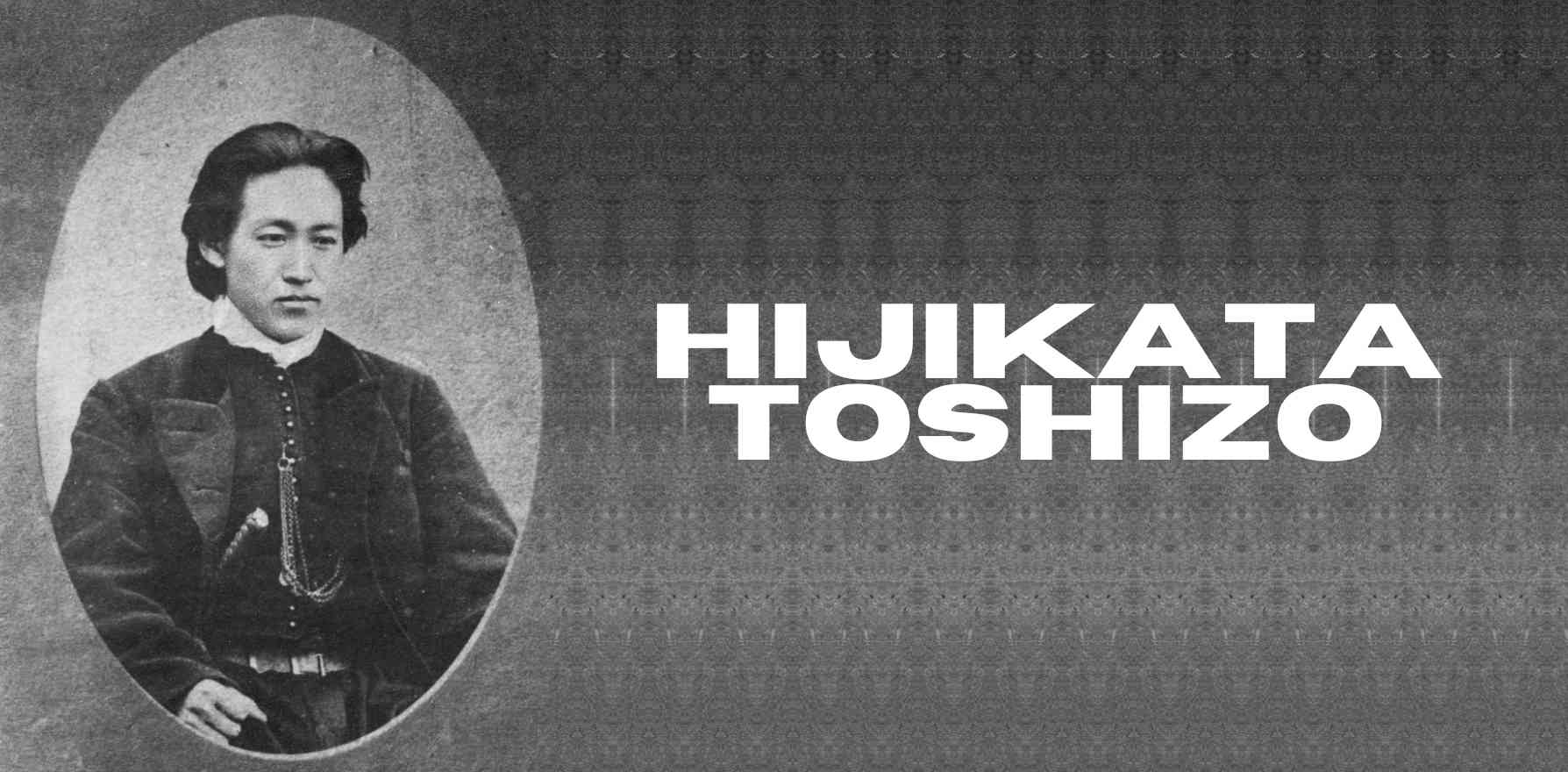
18. Hijikata Toshizo
Hijikata Toshizo (土方 歳三, 1835-1869) was the vice-commander of the Shinsengumi, a special police force during the late Edo period in Japan. He is also known as "the demon of the Shinsengumi". Hijikata was born in Hagi, Nagato Province as the second son of a farmer. When he was young, he was adopted by his mother's brother. In 1854, he travelled to Edo (now Tokyo) and enrolled in Keio Gijuku, one of Japan's first Western-style schools. He studied under Yoshida Shoin, a well-known educator and thinker. In 1860, he left Keio Gijuku and joined the Kiheitai, a volunteer militia created by Sakamoto Ryoma to overthrow the Tokugawa shogunate.
In 1863, Hijikata travelled to Kyoto with Sakamoto and others in an attempt to court the support of the emperor for their cause. However, they were unsuccessful and Hijikata was forced to flee when the shogunate's forces began hunting down members of the Kiheitai. He returned to Edo and joined the Shinsengumi, a special police force created to protect the city from rebel forces. He quickly rose through the ranks of the organization and became its vice-commander.
As vice-commander, Hijikata was responsible for the Shinsengumi's day-to-day operations. He was a strict disciplinarian and was known for his fierce loyalty to the shogunate. He was also known for his skill as a swordsman and his brutality in battle. In 1868, the Shinsengumi were involved in the Battle of Toba-Fushimi, a key battle in the Meiji Restoration. The Shinsengumi were defeated and Hijikata was forced to flee. He eventually made his way to Hokkaido, where he died of tuberculosis in 1869.
Hijikata Toshizo is one of the most famous figures from Japan's Edo period. He was a skilled swordsman and leader, and his loyalty to the shogunate was unshakeable. He is remembered as a brave warrior and a loyal servant of the Tokugawa shogunate.

19. Mitsuide Akechi
Mitsuide Akechi was a Japanese samurai of the late Sengoku period who served as a retainer to the Toyotomi clan. His father, Nagao Kagetora, was a powerful daimyo in his own right, and Akechi's mother was the daughter of Imagawa Yoshimoto. Akechi himself was known for his great strength and skill with the sword, and he was said to be one of the finest warriors of his day.
Akechi first came to prominence during the Siege of Odawara Castle, where he fought under Toyotomi Hideyoshi. He distinguished himself in battle, and afterwards he was appointed as one of Hideyoshi's leading generals. He took part in many of Hideyoshi's campaigns, including the invasion of Korea.
Akechi was also known for his loyalty to the Toyotomi clan. He remained loyal to them even after they were defeated by the Tokugawa clan in the Battle of Sekigahara. Akechi unsuccessfully attempted to rally support for a Toyotomi resurgence, and he was eventually forced to commit suicide.
Despite his death, Akechi remains an iconic figure in Japanese history. He is remembered as a great warrior and a loyal friend, and his story has been adapted into numerous works of fiction.
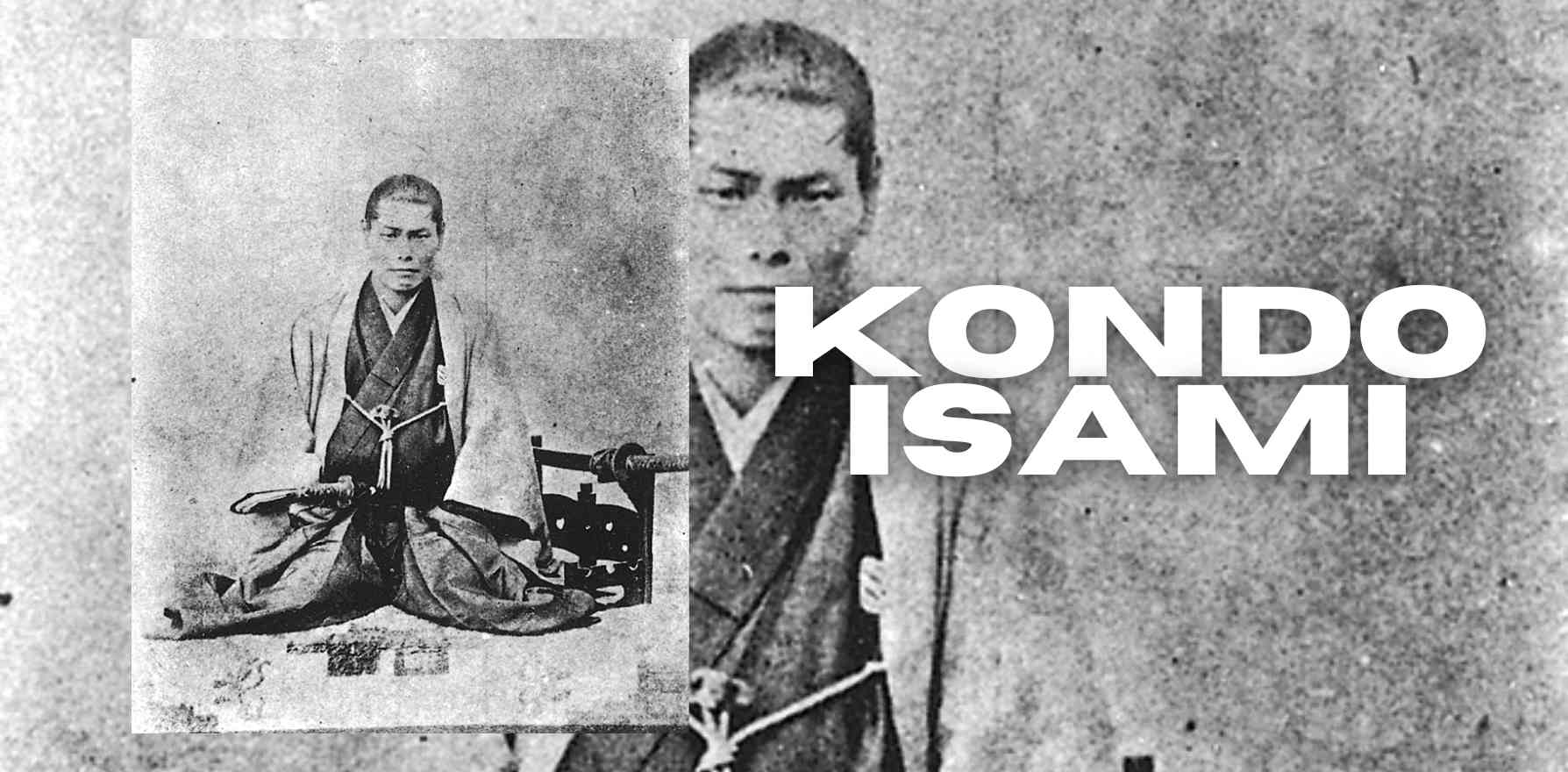
20. Kondo Isami
Kondo Isami was a famous swordsman in Japan during the late Edo period. He was the leader of the Shinsengumi, a special police force created to maintain order in Kyoto during the tumultuous times of the Meiji Restoration. Kondo was known for his skill with a sword and his loyalty to the Tokugawa shogunate. He died in battle in 1868, fighting against rebel forces who were trying to overthrow the shogunate.
Kondo Isami was born in 1834 in the Shimabara domain, present-day Nagasaki Prefecture. His father was a lower-ranked samurai named Kondō Masatomo. Isami's mother died when he was young, and his father remarried. Isami had two half-brothers from his father's second marriage. His childhood name was Kondō Shūgorō (金堂修五郎).
In 1849, at the age of fifteen, Isami started studying under Matsumoto Rihei, a famous swordsman of the time. He also studied under Nakai Chūzan, another well-known swordsman. In 1854, he received the menkyo, or license, of the Shinkage-ryū swordsmanship school from Matsumoto Rihei.
Isami first came to public attention during the Ansei Purge of 1858. The purge was a political event in which many Tokugawa loyalists were purged from government positions. Isami, who was working as a clerk in the Nagasaki Magistracy at the time, killed a man who had been ordered to be executed but was trying to escape. This act earned him both fame and infamy.
In 1863, Isami moved to Edo (present-day Tokyo) and joined the Shinsengumi, a special police force created to maintain order in Kyoto during the tumultuous times of the Meiji Restoration. The Shinsengumi was made up of mostly rōnin, or masterless samurai, who were loyal to the Tokugawa shogunate. As the leader of the Shinsengumi, Kondo was responsible for many bloody battles against rebel forces during the Boshin War (1868-1869), a civil war that resulted in the overthrow of the shogunate.
Kondo died in battle in 1868, fighting against rebel forces at the Battle of Toba-Fushimi. He was posthumously awarded the rank of jūshichi-ken (十七間) by the Tokugawa government. His sword, which he had used to great effect in many battles, was enshrined at the Tōshō-gū shrine in Nikkō.
Kondo Isami is remembered as a skilled swordsman and a loyal servant of the Tokugawa shogunate. He was an important figure in the turbulent times of the Meiji Restoration, and his story has been popularized in many books, movies, and television shows.
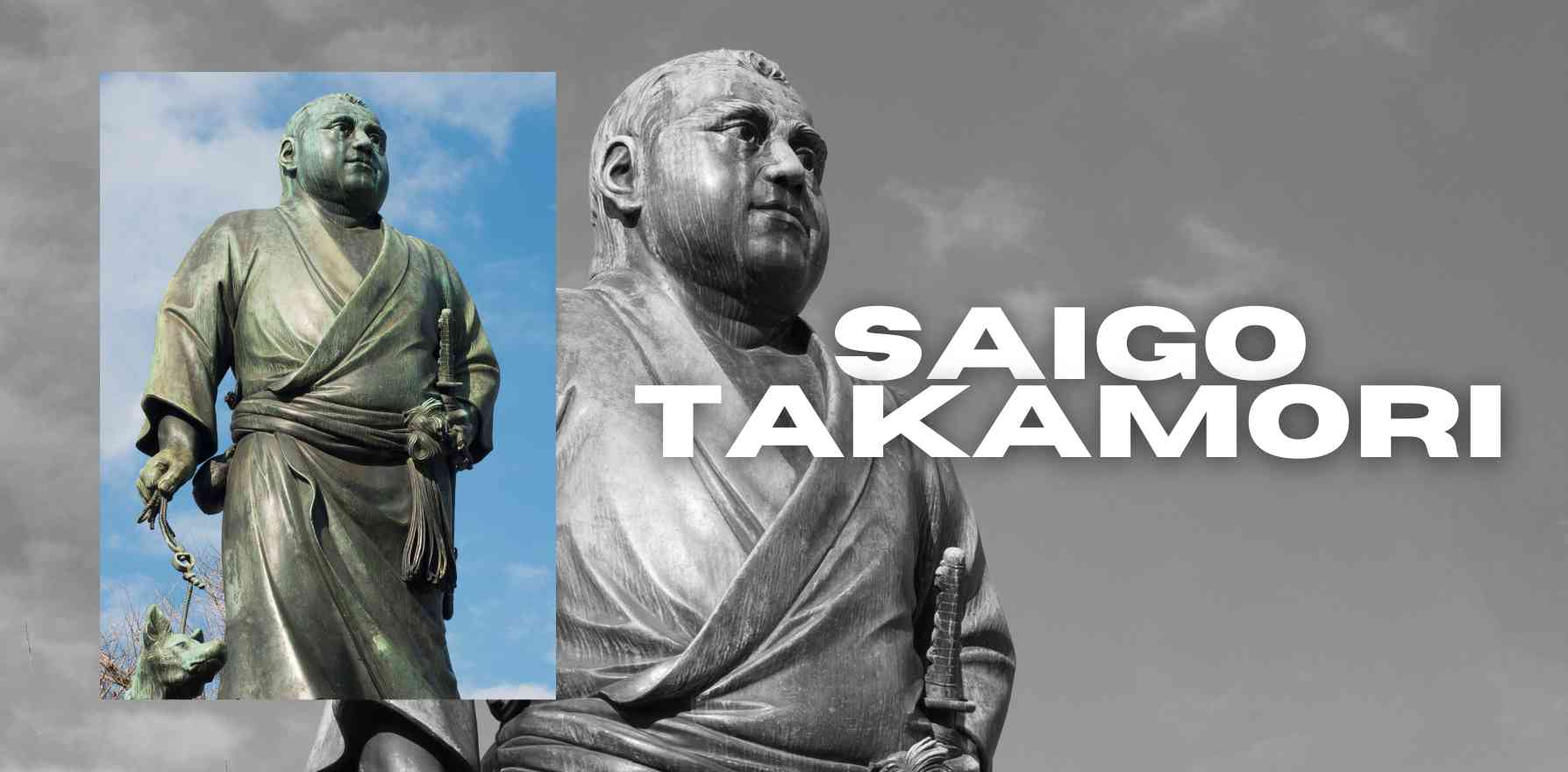
21. Saigo Takamori
Saigo Takamori (西郷 隆盛, January 23, 1828 – September 24, 1877) was one of the most influential samurai in Japanese history. It is considered as the last Samurai. He helped lead the Meiji Restoration of 1868, which overthrew the Tokugawa shogunate and returned power to the emperor. He is also known for his involvement in the Satsuma Rebellion of 1877, which ultimately led to his death.
Saigo was born into a lower-ranked samurai family from Satsuma Province (present-day Kagoshima Prefecture). He first saw action as a teenager during the Boshin War (1868–1869), fighting against pro-Tokugawa forces in support of the Meiji Emperor. He was quickly recognized for his bravery and skill in combat, and rose to become a prominent leader within the new imperial army.
After the war, Saigo remained active in politics and military affairs. He was a key figure in putting down the Satsuma Rebellion of 1877, which was led by his former friend and fellow rebel leader Takamori Saigo. In the aftermath of the rebellion, Saigo was pardoned for his role in it and given a position of responsibility within the government. However, he ultimately became disillusioned with the direction that Japan was taking, and committed suicide in 1877.
Saigo is remembered as a tragic figure who helped to bring about significant changes in Japan, but who ultimately met a tragic end. He remains an important symbol of the samurai code of honor, and is revered by many as one of the most important figures in Japanese history.
The samurai were warriors of premodern Japan who helped shape the country's history. Though their time has passed, their memory and legacy live on. Their skills as fighters and commanders are still studied and admired to this day, along with their code of honor which stresses loyalty, bravery, and self-discipline. For anyone interested in martial arts or Japanese history, the story of the samurai is one that is definitely worth learning about. How many samurai in this list did you know?



